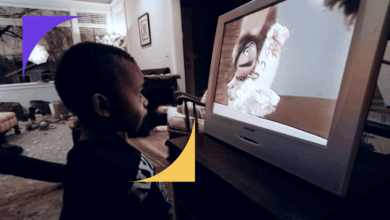
What makes children lie? This seemingly simple question delves into a complex tapestry of developmental stages, motivations, and environmental influences. From toddlers’ first attempts at deception to adolescents’ more sophisticated lies, understanding the underlying reasons for a child’s dishonesty is crucial for fostering healthy relationships and encouraging truthfulness. This exploration will examine the various factors contributing to children’s lying, from the impact of family dynamics to the pressures of peer influence, offering valuable insights for parents, educators, and caregivers.
The development of lying in children is a fascinating process, mirroring their growing cognitive and social skills. This article will look at how lying evolves across different ages, exploring the cognitive and social factors that shape it. We’ll also uncover the motivations behind children’s lies, identifying the role of social pressures, peer influence, and personal desires in shaping their dishonesty.
Understanding these influences is vital for addressing the root causes of lying and promoting honesty.
Developmental Stages of Lying

Lying, a complex social behavior, emerges and evolves across different developmental stages. Understanding how children’s lying abilities develop provides valuable insights into their cognitive and social growth. This nuanced understanding can help parents and educators foster healthy communication and ethical development in children.Lying isn’t simply a malicious act in childhood; it’s a critical step in children’s social and cognitive development.
It reflects their growing understanding of social rules, intentions, and perspectives. Children learn to differentiate between truth and falsehood, and they gradually develop the capacity to deceive others strategically. This progression is crucial to their understanding of social interactions.
Toddlerhood (Ages 1-3)
Toddlers are beginning to understand the concept of communication and the difference between their desires and the reality around them. They often engage in what might be perceived as “lying” but are more accurately expressions of their developing language and cognitive abilities. They might say “I did not” when asked about an action, not necessarily with the intent to deceive, but rather because they haven’t yet fully developed the cognitive skills to explain their actions.
Preschool (Ages 3-5)
Preschoolers are in the midst of rapid cognitive and social development. They start to understand the concept of intentionality and perspective-taking, which are crucial for deception. They might fabricate stories or exaggerate to achieve desired outcomes, often driven by the need to gain attention or avoid punishment. The cognitive development of their imagination plays a significant role.
For example, a child might invent a story about a pretend pet to gain attention.
Elementary School (Ages 6-11)
Children in elementary school show a more sophisticated understanding of social rules and expectations. They become increasingly aware of the consequences of their actions, including the consequences of lying. They begin to understand that lying can damage relationships and that truth-telling is valued. This stage is marked by a significant increase in the complexity of lies. For instance, a child might fabricate an excuse for not completing homework to avoid disciplinary action.
They might also start to lie to manipulate others or to protect themselves.
Adolescence (Ages 12-18)
Adolescents are navigating complex social dynamics and developing a strong sense of identity. Lying becomes more strategic and intentional. Adolescents might lie to protect their privacy, maintain social status, or avoid conflict. The need to fit in and gain peer acceptance significantly influences their decision-making process. They are more likely to lie about their activities, relationships, or personal issues.
Comparison of Lies Across Developmental Stages
| Developmental Stage | Characteristics of Lies | Cognitive Factors | Social Factors |
|---|---|---|---|
| Toddlerhood | Often unintentional; difficulty distinguishing between truth and falsehood; expressions of developing language skills; may not fully grasp the concept of deception. | Limited cognitive abilities; developing language skills; understanding of communication in its early stages. | Seeking attention; expressing needs; lack of understanding of social rules. |
| Preschool | More intentional; fabrication of stories; exaggeration; use of pretend play to gain attention; often driven by desire for attention or avoiding punishment. | Developing understanding of intentionality and perspective-taking; expanding cognitive abilities. | Seeking approval; maintaining social interactions; limited understanding of consequences. |
| Elementary School | More complex; awareness of social rules and consequences; may lie to manipulate others or protect themselves; use lies to gain advantages or avoid negative consequences. | Stronger cognitive abilities; improved understanding of cause and effect; better perspective-taking. | Desire to maintain friendships; avoid conflict; building social status; understanding of social norms. |
| Adolescence | Highly strategic and intentional; lies to protect privacy, maintain social status, avoid conflict; more sophisticated understanding of deception. | Advanced cognitive abilities; complex reasoning; developing sense of self. | Peer pressure; need for belonging; developing a sense of independence; managing complex social relationships. |
Motivations Behind Children’s Lies
Understanding why children lie is crucial for effective parenting and intervention. It’s not simply a matter of labeling them as “bad.” Children’s motivations for dishonesty are often complex and rooted in their developing cognitive and social abilities. Their understanding of right and wrong, the desire to fit in, and the need for control are all factors influencing their decision to lie.Children’s lies are often an attempt to navigate the world around them.
They’re still learning how to manage their emotions, understand social cues, and develop a sense of self. In many cases, a lie isn’t necessarily malicious, but rather a reflection of these developmental processes.
Social Pressures and Peer Influence
Social pressures and peer influence play a significant role in shaping a child’s behavior, including their inclination to lie. Children often want to fit in and avoid being excluded or ridiculed by their peers. This desire can lead to dishonesty as a way to gain acceptance or maintain a positive image.
- Fitting in: Children may lie about their activities or possessions to impress their peers or appear more popular. For example, a child might exaggerate their accomplishments or fabricate stories about their weekend adventures to gain the approval of their friends. They may lie to avoid being seen as different or less cool.
- Avoiding social isolation: Children might fabricate stories or provide false information to avoid being excluded from social activities. They may not want to miss out on playdates or feel like they don’t belong. For example, a child might lie about not having homework to be invited to a party.
- Maintaining social status: Children who feel pressure to maintain a certain social standing may resort to lies. They might embellish their stories or provide false information to maintain their perceived social position. This can be particularly evident in groups where social status is heavily emphasized.
Personal Desires and Goals
Children’s desires and goals can also motivate dishonesty. They may lie to obtain something they want, avoid unpleasant tasks, or gain control over a situation. This is often connected to their developing sense of self and their attempts to influence their environment.
- Obtaining desired outcomes: A child might lie to get a treat, avoid doing chores, or get extra attention. They may exaggerate their skills or interests to receive positive feedback or privileges. For example, a child might say they finished their homework to avoid being grounded.
- Avoiding unpleasant tasks: Children might lie to avoid tasks they find difficult or unpleasant. This could include schoolwork, chores, or social interactions. They may lie about having a headache or feeling unwell to escape an unwanted activity.
- Gaining control: Children may lie to manipulate situations or gain control over their environment. They might feel powerless in certain situations and use lies as a tool to assert themselves or change the outcome. For example, a child might lie about a sibling’s actions to get them in trouble.
Avoiding Punishment
Lying to avoid punishment is a common motivation for children. Their understanding of rules and consequences is still developing, and they might not fully grasp the long-term implications of their actions. They may lie to escape the negative repercussions of misbehavior.
Kids lie for a bunch of reasons, often stemming from a desire to avoid punishment or gain attention. Sometimes, it’s just a developmental stage where they’re figuring out how to navigate the world around them. Thankfully, exciting advancements like lab-made skin cells might mean fewer experiments on animals, which is a huge win for ethical research. This highlights the importance of looking at the bigger picture when understanding why kids sometimes tell tales.
It shows that sometimes, the motivation behind their actions isn’t malicious, but rather a product of their evolving understanding of the world around them. lab made skin cells might mean fewer experiments on animals
- Fear of discipline: A child may lie to avoid being scolded, grounded, or losing privileges. They might lie about breaking a rule or doing something wrong to avoid negative consequences.
- Misunderstanding consequences: Children may not fully comprehend the potential consequences of their actions. A lie might seem like a quick solution to avoid an unpleasant situation, even if it carries repercussions. For example, a child might lie about breaking a vase to avoid a harsh punishment.
- Desire for protection: In some cases, a child might lie to protect someone else from punishment. This could be a sibling, a friend, or even a parent. They might believe a lie is the only way to safeguard the other person.
Environmental Influences on Lying
The development of truthfulness and honesty in children isn’t solely determined by innate factors. Environmental influences, including family dynamics, cultural norms, and parenting styles, play a crucial role in shaping a child’s understanding and acceptance of lying. These external forces can significantly impact a child’s propensity to lie, often in ways that are subtle yet profound.The environment a child grows up in acts as a powerful teacher, shaping their moral compass and influencing their behavior.
Children are highly observant and often mirror the behaviors they see around them. If lying is present and accepted in their environment, it can become normalized and a learned coping mechanism. Conversely, a nurturing environment that values honesty and integrity can cultivate truthfulness in children.
Impact of Family Dynamics
Family dynamics significantly influence a child’s behavior, including their inclination to lie. A close-knit family unit that fosters open communication and trust can discourage lying. Conversely, families characterized by conflict, secrecy, or power imbalances may inadvertently promote lying as a way to navigate complex situations or avoid conflict. For example, a child whose parents frequently disagree or lie to each other may develop a sense that lying is a necessary tool for survival within the family structure.
Parenting Styles and Truthfulness
Parenting styles exert a strong influence on a child’s development of honesty. Different approaches have varying effects on a child’s truthfulness. Authoritative parenting, characterized by clear expectations, consistent discipline, and open communication, generally fosters a child’s understanding of honesty and integrity. Children raised in authoritative environments tend to internalize these values, leading to a higher likelihood of truthfulness.Permissive parenting, on the other hand, often results in children who lack clear boundaries and are less likely to be held accountable for their actions.
This can inadvertently lead to a higher tolerance for dishonesty. Similarly, authoritarian parenting, which emphasizes strict rules and obedience without explanation, can create a climate where children may lie to avoid punishment.
Cultural Norms and Societal Expectations
Cultural norms and societal expectations surrounding honesty and truthfulness play a significant role in shaping a child’s understanding of lying. In some cultures, a degree of “white lies” or social maneuvering may be accepted or even encouraged. This can impact a child’s perception of lying as a socially acceptable behavior. Conversely, cultures that highly value honesty and integrity may instill a strong sense of truthfulness in children.
Correlation Between Environmental Factors and Lying
| Environmental Factor | Description | Likelihood of Lying |
|---|---|---|
| Family Conflict | High levels of conflict, disagreement, and secrecy within the family. | High |
| Authoritative Parenting | Clear expectations, consistent discipline, and open communication. | Low |
| Permissive Parenting | Few or no boundaries, little accountability. | Medium |
| Authoritarian Parenting | Strict rules, obedience without explanation. | Medium to High |
| Cultural Norms (Emphasis on Social Harmony) | Acceptance of “white lies” or social maneuvering. | Medium |
| Cultural Norms (Emphasis on Honesty) | High value placed on truthfulness and integrity. | Low |
Types of Lies Told by Children: What Makes Children Lie
Children’s lies are a fascinating aspect of their development, revealing their growing understanding of social situations and their attempts to navigate them. Understanding the different types of lies children tell, along with their motivations, can help parents and educators respond more effectively and support the child’s healthy development. From innocent exaggerations to more deliberate deceptions, the spectrum of children’s lies is complex and nuanced.Children’s lies are often intertwined with their cognitive and emotional development.
As their understanding of the world and social norms expands, so does their capacity for both truth-telling and deception. This developmental journey can be challenging, as children grapple with the need to be truthful while also learning to manage their own desires and the expectations of others.
Classifying Children’s Lies by Intent and Impact
The intent and impact of a lie significantly influence its classification. A lie told to avoid punishment differs greatly from a lie designed to manipulate or gain an advantage. Recognizing these nuances is crucial for understanding the child’s perspective and addressing the underlying reasons for the lie.
| Type of Lie | Intent | Impact | Examples |
|---|---|---|---|
| White Lies | To avoid hurting someone’s feelings or to maintain social harmony. | Generally harmless; can foster social skills and empathy. | Telling a friend their drawing is “beautiful,” even if it isn’t. Saying “I like your haircut,” even if it isn’t one’s true opinion. |
| Exaggerations | To make a story more exciting or to impress others; often stemming from a desire for attention or to feel significant. | Can be harmless if not taken to extreme, but can lead to misunderstandings or inconsistencies. | Claiming to have caught a very large fish when it was only moderately sized. Exaggerating the length of time spent playing a game. |
| Malicious Lies | To harm or deceive others; usually motivated by a desire for power or control. | Can damage relationships and cause significant emotional distress. | Telling a sibling that another child has spread rumors about them. Spreading false accusations to undermine someone’s reputation. |
| Lies of Omission | To hide something or avoid responsibility, often stemming from fear of consequences. | Can create mistrust and damage relationships. May also indicate a lack of confidence or a struggle with guilt. | Failing to mention a broken rule or a mistake made. Not admitting to having lost a toy. |
| Fabricated Lies | To gain something they want, like avoiding punishment, getting a desired toy, or escaping a task. | Can range from relatively harmless to severely damaging depending on the situation and the child’s motivation. | Making up a story about being sick to avoid going to school. Inventing a reason for missing an important event. |
Intent and the Nuances of Lying
The intent behind a lie can vary greatly depending on the situation and the child’s developmental stage. A child who says they “lost” their homework might be genuinely confused about where it is, while another child might be deliberately trying to avoid consequences. A deeper understanding of the child’s perspective is essential in interpreting the reasons behind the lie.
Impact of Different Lies
The impact of a lie is also crucial in assessing its nature. While a white lie might have minimal impact, a malicious lie can cause significant damage to relationships and self-esteem. Understanding the potential consequences of different types of lies can help parents and educators to guide children towards more honest and responsible behavior.
Strategies for Addressing Children’s Lies
Unraveling the reasons behind a child’s dishonesty is crucial for fostering honesty and truthfulness. Understanding the motivations and environmental factors that contribute to lying is the first step in developing effective strategies for addressing this behavior. Simply punishing a child without understanding the underlying causes can often lead to further issues and a breakdown in communication.Addressing a child’s lies requires a multifaceted approach that goes beyond simply reprimanding the child.
Kids lie for all sorts of reasons, from wanting a cookie to avoiding a consequence. Sometimes, it’s a complicated mix of factors, like wanting to avoid disappointing a parent or feeling pressured by peers. But did you know that sometimes, a child’s body temperature regulation, specifically heat loss through the head, heat loss through head , can affect their behavior?
It’s interesting how seemingly unrelated factors can play a part in a child’s actions, which can ultimately affect their decision to lie.
It necessitates creating a supportive and understanding environment where children feel safe to express themselves honestly, even when their truth might be uncomfortable. This approach involves identifying the root causes, encouraging honesty, and nurturing a supportive environment.
Identifying and Addressing Root Causes
Children’s lies often stem from a variety of factors, including a desire to avoid punishment, gain attention, or cope with emotional distress. Understanding these underlying motivations is paramount to effectively addressing the behavior. A child who lies to avoid punishment might be experiencing anxiety or fear about the consequences of telling the truth. In such cases, a focus on building trust and security is essential.
Alternatively, a child who lies to gain attention might be seeking validation or feeling unheard. Addressing this issue requires providing positive attention and opportunities for the child to feel valued and understood.
Encouraging Honesty and Truthfulness
Cultivating honesty in children requires a consistent approach that emphasizes the value of truthfulness. Children learn by observing their environment and the actions of those around them. Parents and caregivers should model honest behavior and emphasize the positive consequences of telling the truth. This can involve praising honesty, even in situations where the truth might be difficult to share.
For example, acknowledging a child’s bravery for admitting a mistake or apologizing for a wrongdoing demonstrates the value of honesty.
Creating a Supportive Environment
Establishing a supportive environment where children feel comfortable expressing themselves honestly is crucial. Children are more likely to tell the truth when they feel safe, respected, and understood. Creating a space where they feel they can share their thoughts and feelings without fear of judgment or punishment is paramount. This includes actively listening to their concerns, validating their emotions, and providing opportunities for open communication.
For instance, if a child feels pressure to maintain a certain image, the environment should be designed to reduce that pressure.
Importance of Empathy and Understanding
Responding to a child’s lies with empathy and understanding is crucial. Instead of reacting with anger or punishment, it is important to try to understand the reasons behind the lie. This involves asking open-ended questions, actively listening to the child’s perspective, and trying to see the situation from their point of view. Understanding the child’s feelings and motivations is critical to finding constructive solutions.
Kids lie for all sorts of reasons, from wanting to avoid punishment to wanting to impress their friends. Sometimes, it’s just a misunderstanding or a desire to fit in. But, similar to how kids might lie, government inspections of food safety practices are crucial to ensure the quality and safety of the food we eat. For example, food safety government inspection processes help prevent contaminated food and maintain public health.
Ultimately, understanding the motivations behind a child’s lies helps us better address their needs and encourage honesty.
For example, a child who lies about not completing their homework might be feeling overwhelmed or stressed about the task. A compassionate response might involve helping the child break down the task into smaller, manageable steps, or seeking professional help if needed.
Strategies for Addressing Specific Types of Lies
Different types of lies require different approaches. For example, a child who lies to avoid punishment might benefit from a discussion about the potential consequences of their actions. Conversely, a child who lies to gain attention might need more opportunities to express their feelings and needs. Developing strategies tailored to the specific circumstances of each situation can significantly improve the effectiveness of the approach.
It is important to remember that lying is often a sign of underlying issues, and addressing these issues is key to changing the behavior.
The Impact of Lies on Relationships
Lying, a common behavior in childhood, can have significant consequences for a child’s developing relationships. Understanding these impacts is crucial for parents and educators to help children navigate the complexities of truth-telling and building trust. A child’s initial understanding of honesty and deception evolves through various developmental stages, influencing their choices and interactions. These choices, in turn, shape their relationships with parents, siblings, and peers, as well as their overall social and emotional development.Children often learn social skills and emotional regulation by observing and interacting with their environment.
When children lie, they are learning about how to manipulate situations, and this can have negative consequences for their relationships with others. This exploration into the consequences of lying will explore the damage to trust, the disruption of family dynamics, and the lasting impact on a child’s social interactions.
Impact on Parent-Child Relationships
Parental responses to a child’s lies significantly impact the parent-child relationship. Consistently dishonest behavior can erode trust, leading to feelings of disappointment and frustration. A child who lies repeatedly may struggle to form an honest and open connection with their parents, which can manifest in communication difficulties and a decreased willingness to share feelings or seek guidance. For example, a child who frequently fabricates stories about their schoolwork or activities may lead to a parent feeling helpless or exasperated, and a parent might feel less inclined to trust the child’s future accounts.
This ultimately affects the emotional bond between parent and child.
Impact on Sibling Relationships
Lies within sibling relationships can lead to conflict and resentment. Competition for attention and resources can be exacerbated by dishonesty. A sibling who consistently lies about another’s actions can damage trust and create a climate of suspicion. For example, if one sibling repeatedly tells exaggerated stories about the other, it can lead to constant arguments and a breakdown of trust between them.
This can have lasting implications on the sibling dynamic, possibly creating animosity and difficulties in cooperation.
Impact on Peer Relationships
Lying to peers can have serious implications on social interactions. Children who frequently lie might struggle to build and maintain friendships. Their peers may perceive them as unreliable or untrustworthy, leading to social isolation or exclusion. For instance, a child who consistently exaggerates their accomplishments or experiences may struggle to connect with peers on a genuine level, leading to difficulty in forming lasting friendships.
This can affect their self-esteem and sense of belonging within their peer group.
Long-Term Consequences of Dishonesty
The long-term consequences of dishonesty on a child’s personal and social development can be profound. Consistent lying can foster a sense of mistrust and suspicion, which may extend into adulthood. This can hinder their ability to build and maintain healthy relationships in various aspects of their lives. Furthermore, a child who is not taught to be honest might have difficulties in navigating the complexities of social interactions and ethical decision-making.
Creating Trust Issues and Damaged Relationships
Dishonesty consistently undermines the foundation of trust in any relationship. Repeated lying creates a sense of insecurity and uncertainty, damaging the bonds between individuals. This can lead to feelings of betrayal, hurt, and a decreased willingness to communicate openly. Trust issues often manifest in difficulty with communication, cooperation, and problem-solving. For example, if a child repeatedly lies about their whereabouts, it can erode parental trust and create an atmosphere of suspicion.
This breakdown of trust can have far-reaching consequences, impacting the child’s future relationships and their overall well-being.
Recognizing Signs of Lying in Children
Unraveling the truth behind a child’s words can be a challenging task, especially when they’re learning to navigate the complexities of social interactions and personal desires. Understanding the subtle and overt signs of dishonesty is crucial for parents, educators, and caregivers to create a supportive environment where honesty and trust can flourish. Recognizing these signs helps us address the underlying issues contributing to a child’s dishonesty and foster open communication.Identifying deception in children requires a keen eye for both verbal and nonverbal cues.
It’s essential to look beyond the spoken word and consider the accompanying body language, tone of voice, and overall demeanor. A child’s emotional responses, facial expressions, and physical actions can often reveal more than their words. By combining verbal and nonverbal observations, we can gain a more comprehensive understanding of the situation and encourage honest behavior.
Identifying Subtle Signs of Lying
Children often display subtle signs of dishonesty that may be easily overlooked. These indicators might manifest as hesitation, evasiveness, or a lack of eye contact. A child might also exhibit an unusually high degree of anxiety or a change in their usual behavior. For example, a child who is normally outgoing might become withdrawn or quiet during a particular interaction.
These subtle cues can provide valuable insights into a child’s internal state and help us discern if something is amiss.
Recognizing Overt Signs of Lying
More obvious signs of lying can include inconsistencies in their stories, contradictory statements, or fabrication of details. A child might embellish or invent details to make their story more appealing or to avoid the consequences of their actions. For instance, a child might claim to have seen a classmate with a forbidden toy, even though they know that’s not true.
These overt signs, while often more apparent, require careful observation to ensure accurate interpretation.
Observing Verbal and Nonverbal Cues
Understanding the importance of both verbal and nonverbal cues is paramount in recognizing lying in children. Verbal cues encompass what the child says, including inconsistencies, hesitations, evasiveness, or the use of filler words like “um” or “like.” Nonverbal cues, on the other hand, involve body language, facial expressions, tone of voice, and physical reactions. For example, a child might avoid eye contact or fidget excessively when asked about a specific incident.
Common Indicators of Lying in Children
- Inconsistency in statements: A child might provide different accounts of the same event depending on the situation or who they are talking to. This inconsistency is a strong indicator of potential dishonesty.
- Changes in behavior: A sudden shift in demeanor, such as becoming unusually quiet or withdrawn, might signify that the child is trying to conceal something.
- Hesitation and evasiveness: A child might hesitate before answering questions or provide vague or indirect responses, avoiding direct answers.
- Avoidance of eye contact: A child who avoids eye contact when questioned might be attempting to conceal something or feel guilty about their actions.
- Unusual emotional reactions: A child might display an unusually high level of anxiety, fear, or anger when confronted about a particular situation.
Table of Common Verbal and Nonverbal Cues, What makes children lie
| Category | Verbal Cues | Nonverbal Cues |
|---|---|---|
| Inconsistency | Providing different accounts of the same event, contradicting statements | Shifting gaze, avoiding eye contact, fidgeting, or appearing uneasy |
| Hesitation | Stuttering, pausing excessively, using filler words, or appearing reluctant to answer questions | Rapid blinking, playing with hair, or exhibiting signs of nervousness |
| Evasiveness | Giving vague or indirect responses, changing the subject, or deflecting questions | Turning away, avoiding physical contact, or exhibiting a lack of engagement |
| Emotional Reactions | Expressing excessive anxiety, fear, or anger | Facial expressions of guilt, discomfort, or fear, tense posture, or sudden changes in tone of voice |
Lying vs. Other Misbehaviors
Children exhibit a range of behaviors that can be challenging for parents and caregivers. Understanding the nuances between lying and other misbehaviors is crucial for effective intervention and support. While lying is a specific form of dishonesty, it can often overlap with other behavioral issues, highlighting the importance of careful consideration of underlying causes.Lying is not always an isolated event; it can be connected to other behavioral patterns.
Recognizing these connections can provide a more complete picture of the child’s development and help tailor appropriate interventions. Often, lying is a symptom, not the cause, of deeper issues.
Distinguishing Lying from Other Misbehaviors
Understanding the distinctions between lying and other misbehaviors is essential for creating appropriate responses. Lying involves a deliberate intent to deceive, while other misbehaviors might stem from impulsivity, lack of understanding, or defiance. Misbehaviors, like aggression, defiance, or stealing, may not always involve a conscious effort to mislead.
Potential Links Between Lying and Other Behavioral Issues
Lying can be intertwined with various behavioral challenges. A child who consistently lies might also display signs of anxiety, insecurity, or a need for attention. For example, a child who feels inadequate might fabricate stories to boost their perceived status among peers. Alternatively, a child seeking attention might lie to elicit a response, even if negative. This is not to say that all lying stems from these issues, but recognizing these potential links is crucial for effective intervention.
Underlying Causes of Lying
Identifying potential underlying causes for lying is vital for addressing the root issue. Anxiety, insecurity, and a need for attention are common factors. A child who feels anxious about a situation might lie to avoid confrontation or punishment. Similarly, a child lacking confidence might embellish stories to appear more capable or popular. Conversely, a child seeking attention might lie to gain attention, even if it is negative attention.
A comprehensive understanding of the child’s emotional landscape is critical to understanding the motivation behind the lie.
Importance of Differentiating Between Lying and Other Misbehaviors
Misinterpreting a child’s behavior can lead to ineffective interventions. A child’s impulsivity or defiance might be misconstrued as lying, leading to unnecessary conflict. Conversely, a child’s attempt to manipulate a situation to achieve a desired outcome could be interpreted as mere misbehavior, hindering the identification of the underlying cause. Accurate differentiation is key to providing tailored support and addressing the specific needs of the child.
Strategies for Addressing Lying in the Context of Other Misbehaviors
Addressing lying within the context of other misbehaviors requires a multi-faceted approach. It’s crucial to understand the interplay between different behaviors to formulate effective strategies. Consider the following steps:
- Assess the situation comprehensively: Examine the specific behaviors, their frequency, and potential triggers. A detailed analysis will help pinpoint the root causes of the misbehavior and the lie.
- Seek professional guidance: Consult with a therapist or counselor to gain insights into the child’s emotional and developmental needs. They can offer specialized guidance and tailored strategies for addressing the underlying issues.
- Focus on building trust: Creating a supportive and trusting environment is vital for fostering open communication. Children who feel safe and understood are more likely to express their concerns and emotions honestly.
- Employ positive reinforcement: Acknowledge and reward honest behavior. This can reinforce the importance of truthfulness and build positive associations with honest actions.
Practical Application of Knowledge

Understanding the complexities of childhood lying is the first step toward effectively addressing it. This involves recognizing the underlying reasons for a child’s dishonesty, the environmental factors that might contribute to it, and the specific types of lies they tend to tell. Armed with this knowledge, parents, educators, and caregivers can implement strategies to foster honesty and build trust.
Strategies for Addressing Children’s Lies
Addressing children’s lies requires a multifaceted approach that considers the child’s developmental stage, motivations, and the specific circumstances surrounding the lie. A punitive approach often proves ineffective and can damage the parent-child relationship. Instead, a focus on understanding and building a foundation of trust is crucial. This necessitates open communication, empathy, and consistent reinforcement of honesty.
- Empathy and Understanding: Before confronting a lie, take a moment to understand the child’s perspective. What might have motivated them to lie? Were they trying to avoid punishment, gain attention, or protect someone else? A calm, non-judgmental approach is vital in diffusing the situation and fostering a sense of safety and security. For example, a child might lie about losing a toy because they fear the reaction of a parent or sibling.
- Open Communication and Active Listening: Create a safe space for the child to express themselves. Ask open-ended questions to encourage them to share their thoughts and feelings without fear of reprisal. Active listening demonstrates that you value their perspective, which can foster a sense of trust. For instance, instead of saying “Why did you lie?”, try “Tell me what happened.”
- Consistency and Clear Expectations: Establish clear rules and expectations regarding honesty and truthfulness. Reinforce these values consistently through your actions and words. Consistency builds trust and helps children understand the importance of being truthful.
- Positive Reinforcement for Honesty: Praise and reward honest behavior. This reinforces the positive association with truthfulness and encourages the child to be honest in the future. For example, a child who admits to making a mistake about their homework can be praised for taking responsibility.
Fostering an Environment of Trust and Honesty
Creating an environment where honesty thrives is crucial in preventing future lies. This environment is built on mutual respect, open communication, and consistent reinforcement of values. Children are more likely to be honest when they feel safe, secure, and valued.
- Modeling Honesty: Children learn by observing. Parents and educators should model honest behavior in their own interactions and decisions. This demonstrates the importance of truthfulness and sets a positive example for the child.
- Building Trust Through Connection: Spend quality time with your child, engaging in activities they enjoy. This strengthens the parent-child bond, fostering a sense of security and trust. This also reduces the need to lie for attention.
- Encouraging Open Communication: Establish a pattern of open communication. Make it clear that you value their thoughts and feelings, and encourage them to express themselves honestly. Create opportunities for dialogue and discussions, such as family dinners or bedtime stories.
Actionable Steps to Address and Prevent Future Lies
Addressing lying requires a systematic approach that focuses on understanding the root cause, implementing appropriate strategies, and fostering an environment of trust.
- Identify the Trigger: Observe the situations where the child is most likely to lie. Understanding the circumstances surrounding the lie can help determine the underlying reasons for their dishonesty.
- Address the Underlying Issues: Once the trigger is identified, address the underlying issues contributing to the lie. Is it fear of punishment, a need for attention, or a misunderstanding of expectations?
- Establish Clear Consequences: Establish clear consequences for lying. These consequences should be logical and age-appropriate. For example, if a child lies about chores, they may lose privileges.
- Follow Through Consistently: Ensure that you follow through on the consequences consistently. Consistency builds trust and reinforces the message that lying has negative repercussions.
Navigating Difficult Situations Involving Lying Children
Dealing with a lying child can be challenging. However, a calm and empathetic approach is key.
| Situation | Action |
|---|---|
| Child lies about a minor infraction. | Listen empathetically, ask open-ended questions to understand the motivation behind the lie, and explain the importance of honesty. |
| Child lies about a more serious infraction. | Maintain a calm demeanor, and explain the negative consequences of dishonesty. Focus on understanding the reasons for the lie. |
| Child consistently lies. | Consult with a professional to assess the situation and explore possible underlying issues. |
Conclusion
In conclusion, understanding what makes children lie requires a multifaceted approach. It’s not simply about punishment, but about recognizing the complex interplay of developmental stages, motivations, and environmental factors. By acknowledging the various influences on a child’s truthfulness, we can foster a supportive environment where honesty thrives. The key takeaway is to identify the underlying causes, address them with empathy, and equip children with the tools to navigate the world honestly.
Ultimately, helping children understand the importance of truthfulness is an investment in their well-being and future relationships.





